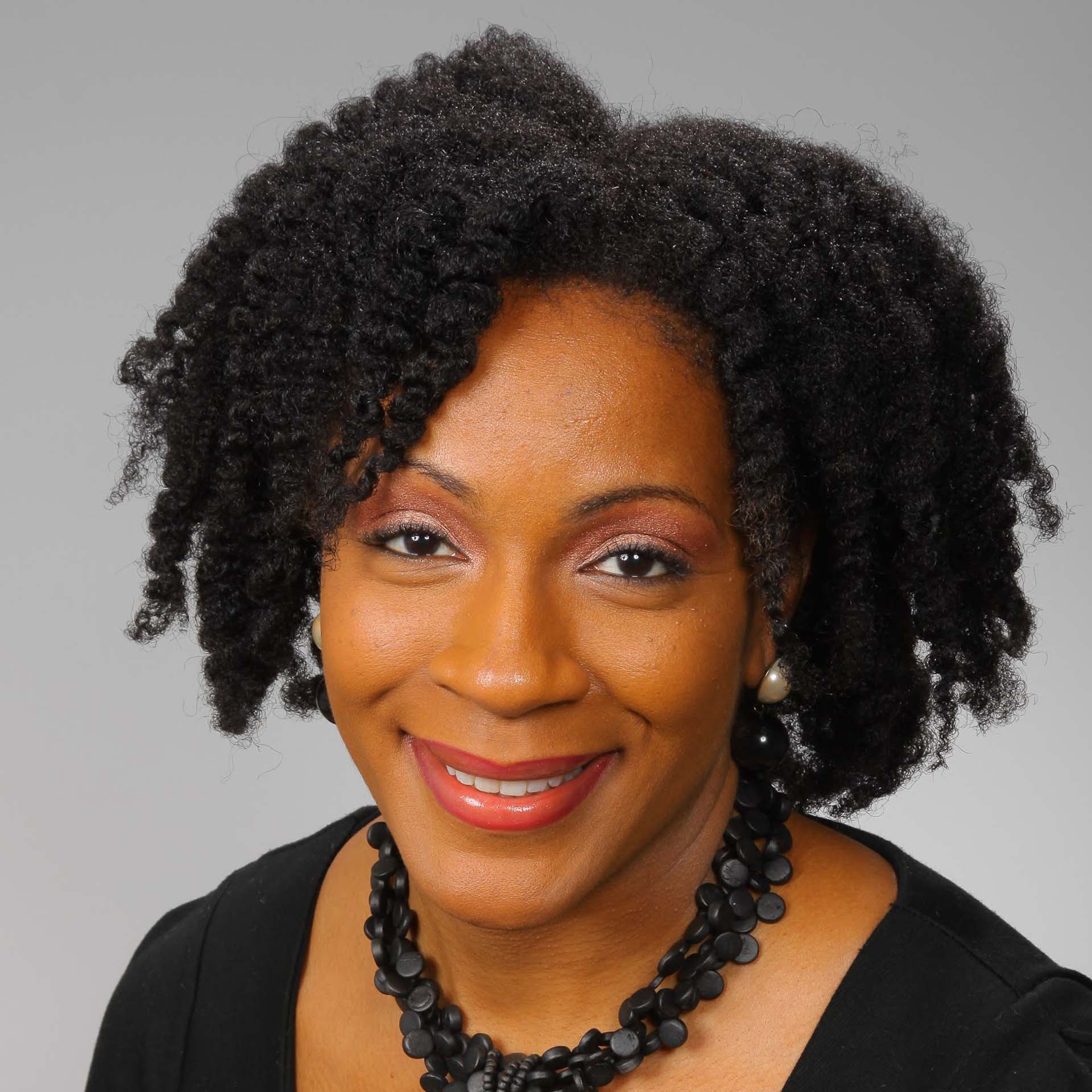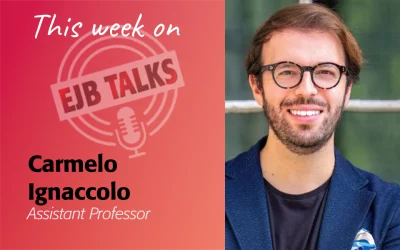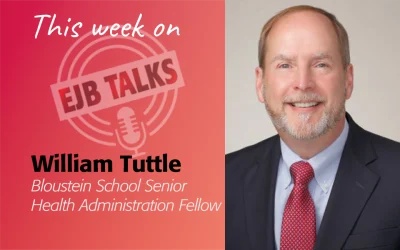This episode of EJBTalks brings a fan favorite and an exceptional Bloustein faculty member back to the studio as Stuart Shapiro and Professor Dawne Mouzon have a second conversation on health and economic disparities. They discuss the disparate impact COVID-19 continues to have on Black and Brown communities, why a community so greatly affected is the most apprehensive about taking a vaccine, and the necessity of an equitable response to this public health crisis. Dr. Mouzon also discusses how the Biden administration can most effectively craft its response to the pandemic and other issues affecting our most vulnerable populations.
Stuart Shapiro
Welcome to EJB Talks, I’m Stuart Shapiro, the Associate Dean of Faculty at the Bloustein School, and the purpose of this podcast is to talk with my colleagues and our alumni about policy, planning, and health, the interaction between these issues, and how they affect people in New Jersey, the United States, and the world.
This podcast started in the wake of the onset of the COVID-19 pandemic. One of our first guests was my colleague, Professor Dawne Mouzon, who highlighted the inequalities that the pandemic weighed bear. Today, we have her back on to see how this tragedy has progressed and what lies ahead. Welcome back.
Dawne Mouzon
Thank you for having me.
Stuart Shapiro
Absolutely. Let me start off by asking one of the questions I asked last time, just in case people don’t remember or didn’t listen to that first podcast… which is wonderful, you should go back and listen to it. Why has COVID-19 had such a disparate impact? I was wondering if you could start off by re-explaining this for our audience.
Dawne Mouzon
Sure. I think the primary explanation I gave back then was that Black, Latino and Indigenous people are more likely to have chronic conditions, many of which co-occur together and negatively affect the immune system. And these groups are also more likely to experience chronic stress due to poverty and racial discrimination. And those two things also weaken the immune system over time. So that kind of covers the main clinical risk factors for the illness.
And the other two risk factors, I believe I mentioned, were more social and institutional in nature, and have to do with housing and labor market inequality. So the history of racial residential segregation continues to relegate Black and Latino people to crowded living conditions, often in urban communities. And with those denser housing structures and larger household sizes, it’s much harder for people, obviously, to remain isolated either after they contract COVID-19 or when they become exposed to it.
And in terms of the labor market, Black and Latino people are more likely to be frontline essential workers, typically in public-facing service positions, which put them more at risk of acquiring COVID. So those are just some of the central reasons I think that helped to explain the disparate impact on Black and Brown communities.
Stuart Shapiro
Yeah, that sounds sadly familiar and right. Has anything changed over the past eight months to affect this for the better or worse? Or is it just been sort of confirmation of everything we saw at the onset of the pandemic?
Dawne Mouzon
I have to say no, unfortunately. I mean, I’m not pessimistic in this assessment by forecasting that things look worse. But I really have no reason to be optimistic that things will get better, I kind of think it will remain the same. So I don’t think these trends are likely to change anytime soon.
Stuart Shapiro
It’s still… it’s the people that have to go back to work or the first the people that are more likely to be in those Black, Latinx, and Indigenous communities.
Dawne Mouzon
That is true.
Stuart Shapiro
And that brings us to the non-health impacts, which I don’t think we talked as much about last time, but I think we know a lot more about right now. Can you talk a little bit about the disparities and the economic impacts of the pandemic and in the educational disparities?
Dawne Mouzon
The impacts, as we all know, on individuals and families have just been nothing short of tragic. There have been unprecedented high rates of unemployment across the course of the pandemic. And unemployment is not randomly distributed. So the pandemic has really only exacerbated the disproportionate rates of unemployment among Black and Latino populations.
In terms of educational disparities, we also know that they are not randomly distributed. Black and Latino children have suffered even more since the pandemic began. So their schools were already under-resourced, in terms of standard in-person teaching resources. So the abrupt move to remote learning has been far less seamless than in schools in wealthier neighborhoods. And then, of course, you’ve got the technology gap. So low-income students and students of color are less likely to own their own computer devices to support remote learning, especially quality and reliable devices. And they’re less likely to have access to high quality and reliable Wi-Fi as well. And so all of those factors will, I think exacerbate… well we’ve seen, they exacerbated the educational disparities that existed before COVID.
Stuart Shapiro
And we see not just that people, that remote is being done better in wealthier, whiter communities. But remote is also less likely. I mean, the schools that go back at least part-time or such are more likely to be in those wealthier communities
Dawne Mouzon
That’s right.
Stuart Shapiro
And they have the option of going to private schools if the public schools don’t go back.
Dawne Mouzon
Right. And early on a lot of the wealthier children or families in the wealthier school districts created these little pod systems to support remote learning. And those were opportunities that just weren’t available to students of color.
Stuart Shapiro
The scary thing about this is, it’s something of an accelerant in inequality. Because it takes existing inequalities and makes them worse for the long term because people that have are going to get the better education, they’re going to get the spots in the better colleges, they’ll get the better jobs.
Dawne Mouzon
No, you’re absolutely right. It really lights these things on fire. And not just in the temporary interim, either. These are impacts that are going to last for generations, I think.
Stuart Shapiro
Yeah. Well, let’s, let’s turn to a little bit of optimism here ((laughing)) because this has been been a downer so far… I have to tell you ((laughing))
Dawne Mouzon
((laughing)) I have that effect on people.
Stuart Shapiro
((laughing))… Personally, you are lovely though.
The vaccine has given us a small bite at the end of the tunnel. What do you expect in terms of different populations in terms of people that don’t have access to the vaccine and people that will be willing to get the vaccine?
Dawne Mouzon
In terms of uptake, the good news is that overall trust in the vaccine has risen steadily since September 2020. But there are some important gaps in vaccine intention across different socio-demographic groups. So there’s a pew research study that was released in December 2020. And that found that men are more likely to report that they intend to get the vaccine which was somewhat of a surprise. As our adults who are older versus younger, those with more education, those who report being or leaning democrat, and those with higher income. So those are the groups that are more likely to report that they intend to get the vaccine.
But as many would have predicted, the biggest gap in terms of vaccine intention is found when you look at race-ethnicity. So this study found that Asians by far are the group that is most likely to report the intention to become vaccinated. So 83% of Asians said they would definitely or probably get the vaccine. And 63% of Latinos 61% of whites plan to get the vaccine, but only 42% of black Americans plan to get the vaccine. So they’re the only group in which fewer than half of their population intends to become vaccinated. So that, of course, is an issue.
And many point to the high levels of mistrust among black Americans, and that’s true that mistrust does exist. But it’s historically grounded, given medical abuses that have occurred such as the Tuskegee syphilis study and the theft of Henrietta Lacks cancer cells. So it’s not just some random paranoia, I think it’s important to make this point. Black Americans have a reason to be skeptical and distrustful. It’s not just some exotic cultural quirk that Black people have. So it’s up to us really to make a concerted effort to acknowledge and validate and push through these barriers so that we can find a way to increase vaccine uptake among this group.
So that’s just uptake. But vaccine access, of course, is a different issue altogether. And I’m not sure we have really much preliminary data yet given the slow vaccine rollout. But if history were to repeat itself, which of course it tends to do, I would venture to guess that like many health resources, there’ll be lower access to the vaccine in low-income neighborhoods and neighborhoods of color. Right now, vaccine rollout is going at a snail’s pace everywhere. And whenever either a public health intervention or medical technology is not universally offered or accessible, uptake will occur, as we were just discussing among the most advantaged segments of the population first, which will of course further disparities that we already see.
Stuart Shapiro
So what’s the message that has to go out to overcome that, as you said, justified skepticism of the medical establishment that exists, particularly in black communities? I don’t know if it’s as bad in LatinX or Indigenous communities, but what’s the message that has to go out to overcome…?
Dawne Mouzon
The high levels of mistrust certainly exist among other communities of color, but definitely the highest among Black communities. And I think, it’s many fold. I think, first, we have to really validate that their feelings are grounded. These things did happen. And trust is earned, like for anything, anybody, trust is earned. And when you have these historical insults that happened in medical care decades ago, that’s one thing. But then you still have the consistent, unequal treatment that’s given to black patients on a daily basis. So it’s a lot to overcome.
I think validating their concerns. I think it’s important that we’ve seen a lot of black leaders, saying they intend to get the vaccine… getting the vaccine. It’s important and really good that President Biden has put Black physicians in positions of power to help bring down those walls of mistrust and model that willingness to take the vaccine. So I think it will take time, and it’ll take more resources sent to those communities to encourage them to become vaccinated.
Stuart Shapiro
Gotcha. Now, and this is not an uptake issue, but I know there are some policies that also exacerbate some of these differences. One thing I read recently was that its class 1A of vaccine eligibility are people who are 75 or older, but African Americans tend to get the disease at younger ages. And so by putting that age restriction in there, you are not with any evil intent I don’t think, but you are, De jure, creating a disparate impact there. What should we be doing differently policy-wise?
Dawne Mouzon
I’m really so happy that you asked me this question because I think it took a long time, but slowly, people are starting to recognize these important nuances. So in public health, there’s a well-known concept called weathering or early health deterioration among Blacks and other marginalized populations. So because Black people are exposed to a lifetime of chronic stress, due to poverty, discrimination, and so on, their physiological stress response, or fight or flight response, never turns off. And because of that, the constant acts of activation of stress hormones wear down black bodies prematurely. And in fact, a 2016 study quantified the extent of weathering and found that African Americans developed three chronic conditions; hypertension, diabetes, and cardiovascular disease, on average, 10 years earlier than white people.
So all this to say that age-based policies and practices really do need to recognize these important differences. At age 75, Black people tend to have the bodies of someone who’s 85, or at least those who survive to the age of 75, in the first place. So I think that a more thoughtful and effective approach, especially when we’re talking about vaccine distribution, would take an equity approach rather than an equality approach as we currently have. So an equality approach proposes everyone should get the same thing, we should all get to have the same stage standard for everyone because it’s only fair that everyone received the same thing. It’s the logic. But an equity approach would instead focus on what each population needs, even if that comes in the form of priority treatment for some groups.
So the average life expectancy of Black women is 76 years, and the average life expectancy of Black men is 71.5 years. This means most of them won’t even reach the age of 75 to qualify to receive the vaccine right now. And so I know that many Americans sort of inherently hold the equality perspective. But I also know, that beginning in large part with the deaths of Breonna Taylor and George Floyd, this past year has opened many of our eyes to the extent of racial inequity in this country. So with this new awareness, I really think we should all strive to adopt and advocate for an equity perspective that acknowledges and remedies these historical insults. I think it’s perfectly fine to have a different age standard. And that would be fair, and just
Stuart Shapiro
Toward that end, one of the other causes for optimism, at least as far as both vaccines and the course of the pandemic has been the change in presidential administrations that occurred earlier this week. Toward that end of what you just talked about, what kind of policies are you looking for, from the Biden administration, where you’ll say, “Wow, they get it,” this is a step in the right direction?
Dawne Mouzon
Yes. Well, I didn’t realize how long I had been holding my breath, but… What a relief. ((laughing))
Stuart Shapiro
((Laughing)) It was a long time.
Dawne Mouzon
I think about four years. But yes, I really am hopeful for the first time in a really long time. And so some of the things I really appreciate that the Biden administration is doing.. so again not just discussing it in an abstract form, but really acting upon the need to address racial inequities and COVID-19. So his COVID-19 Health Equity Task Force… and again, the term equity, not equality… which has been charged with ensuring an equitable pandemic response, however, they ultimately determine to do that. And the fact that he’s filling his cabinet and key governmental positions with scientists who he’s actually given the autonomy to lead the fight against COVID-19 really fills me with optimism.
Of course, the direct payments for which he’s advocating his executive order to extend the moratorium on evictions and foreclosures are really important incremental efforts to address these racial and ethnic inequities. And I’m optimistic that he’s taking a much different leadership approach to the pandemic, in so many ways. Maybe one of the most important ways is the way he intends for the federal government to take a far more central role in coordinating the COVID-19 response. So I’m really looking forward to that leadership at the federal level to help ramp up vaccine administration and production.
Stuart Shapiro
Yeah, let’s get them out there. Is there anything else on this subject you want to add for our audience?
Dawne Mouzon
I don’t think so.
Stuart Shapiro
Excellent. Well, it was a picture you gave us and you can tell me if I’m wrong about this that we have a lot to be pessimistic about, but at least for the first time in a while, some things to be optimistic about.
Dawne Mouzon
Absolutely. Absolutely.
Stuart Shapiro
Great. Well, thank you very much for coming on again.
Dawne Mouzon
Thanks for having me, it was a lot of fun.
Stuart Shapiro
Also, a big thank you to our production team, Amy Cobb and Karyn Olsen. We’ll be back next week with another talk from another expert from the Bloustein School. Thanks for listening and stay safe.




